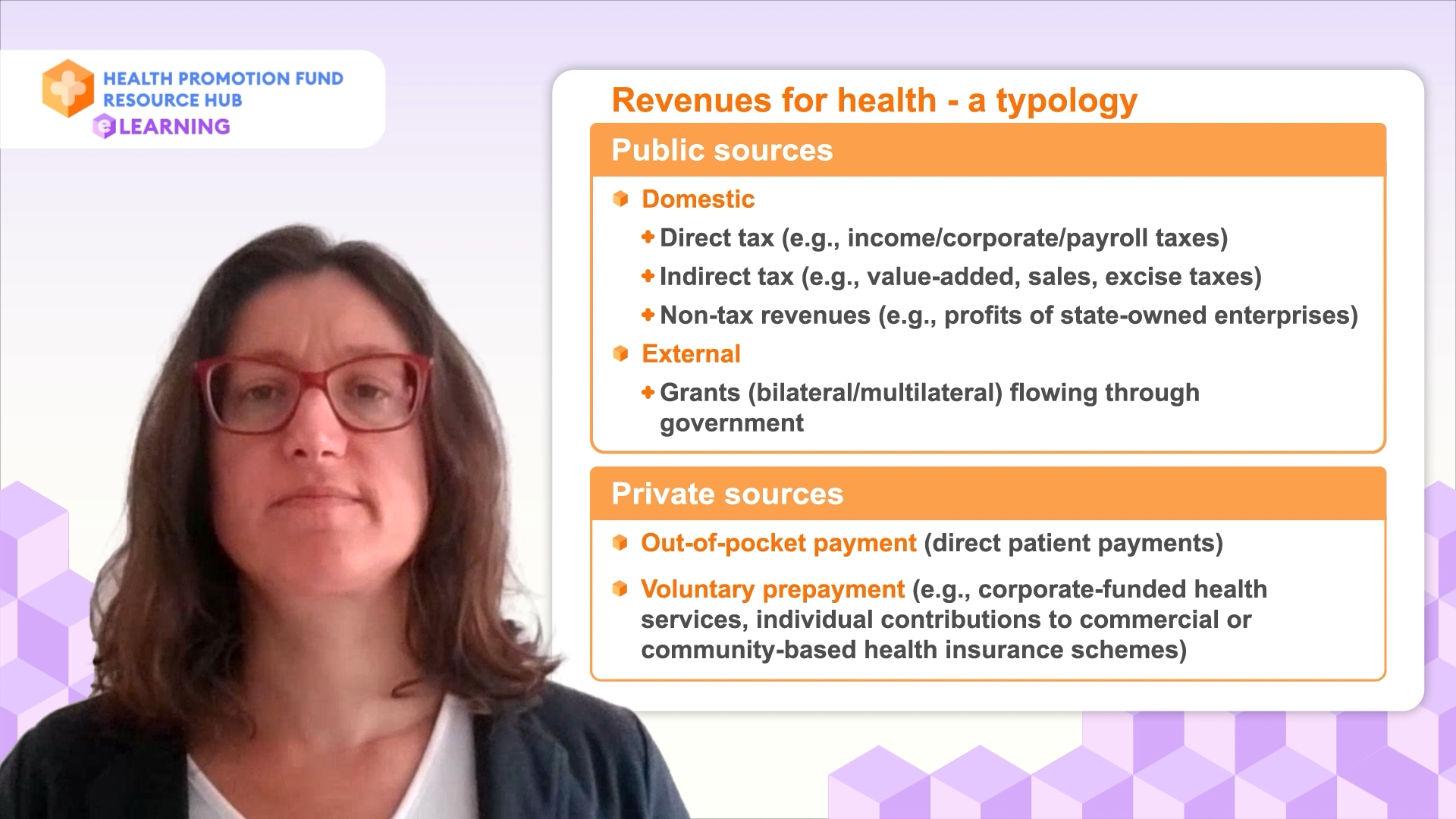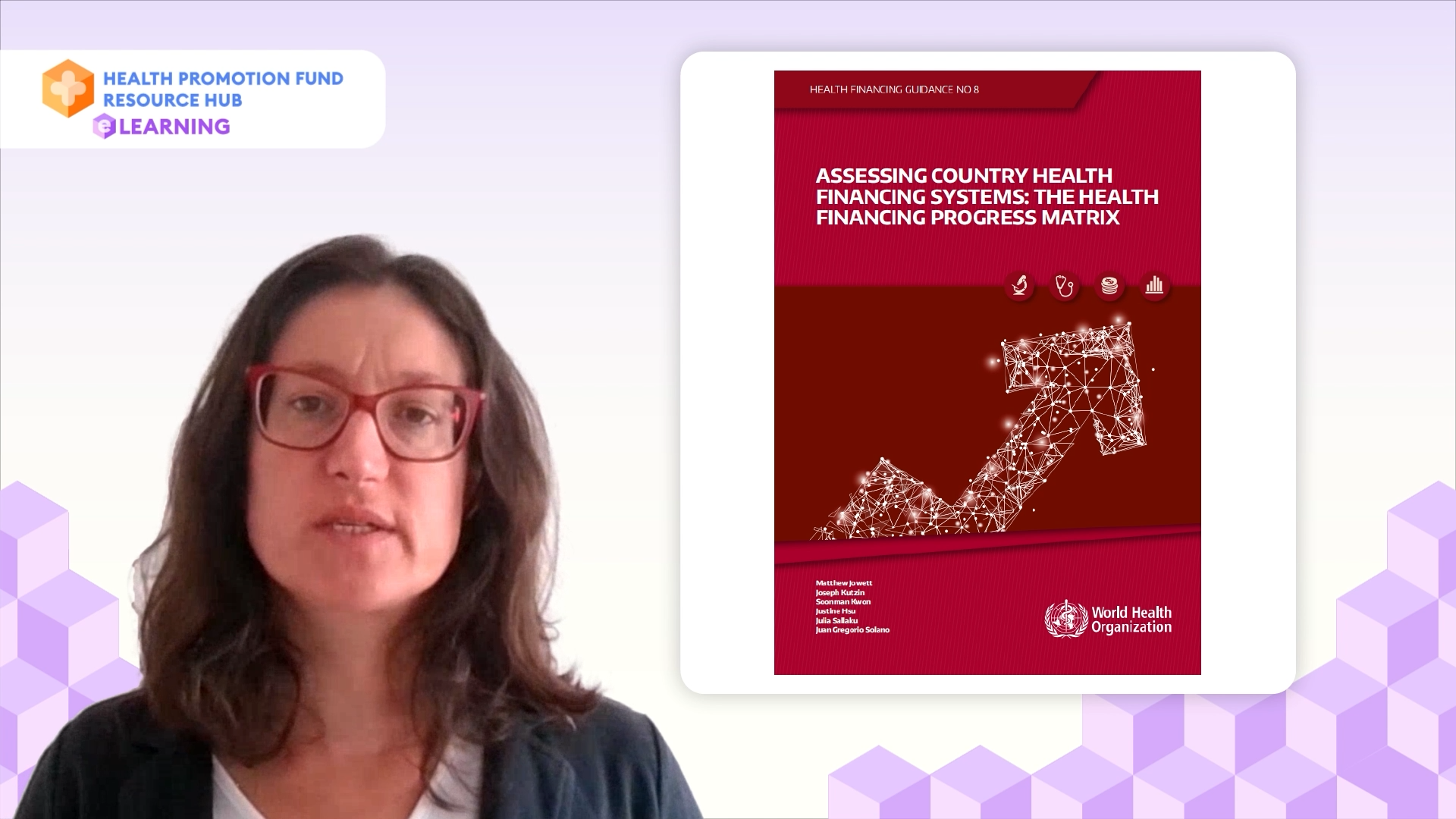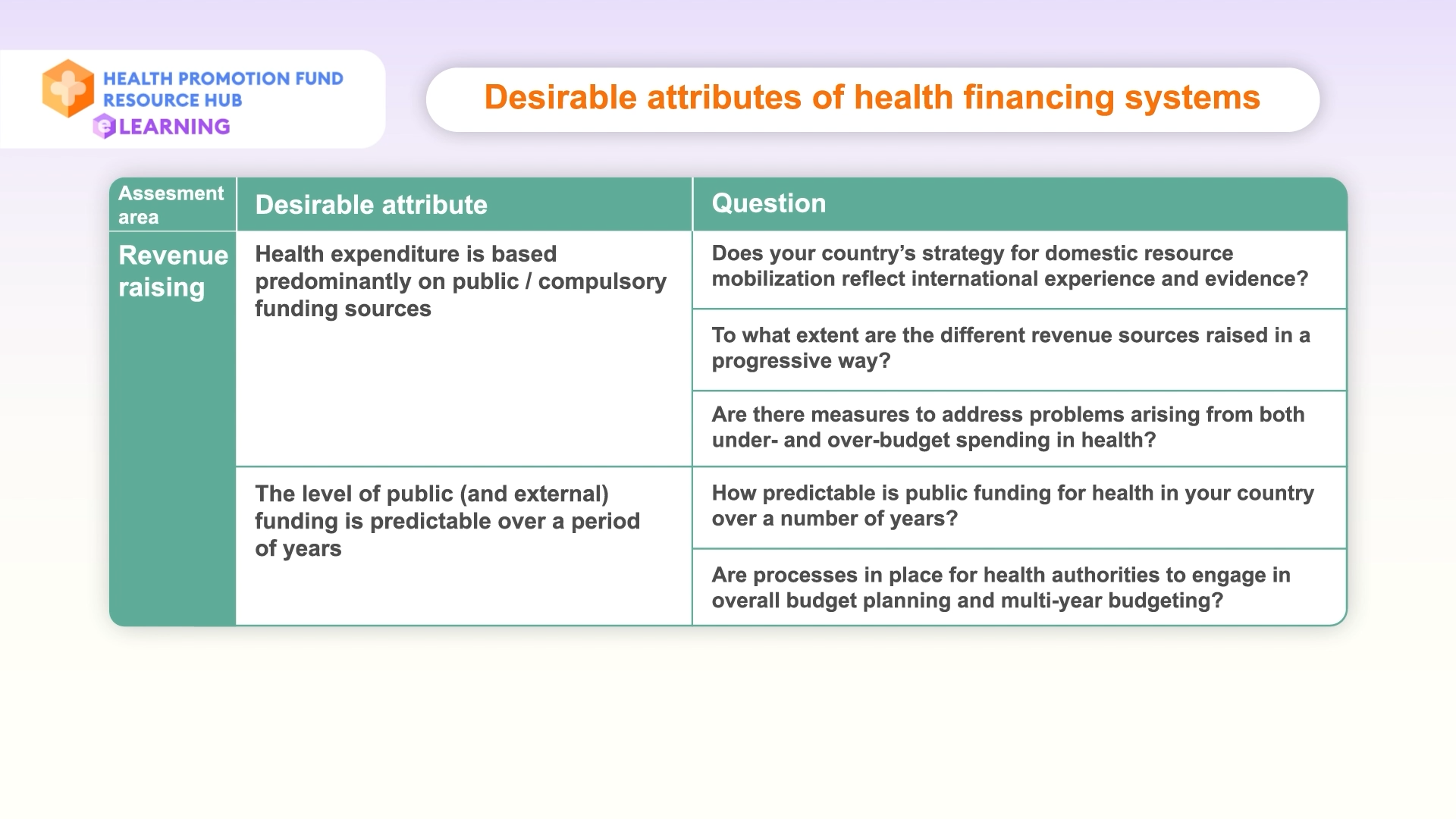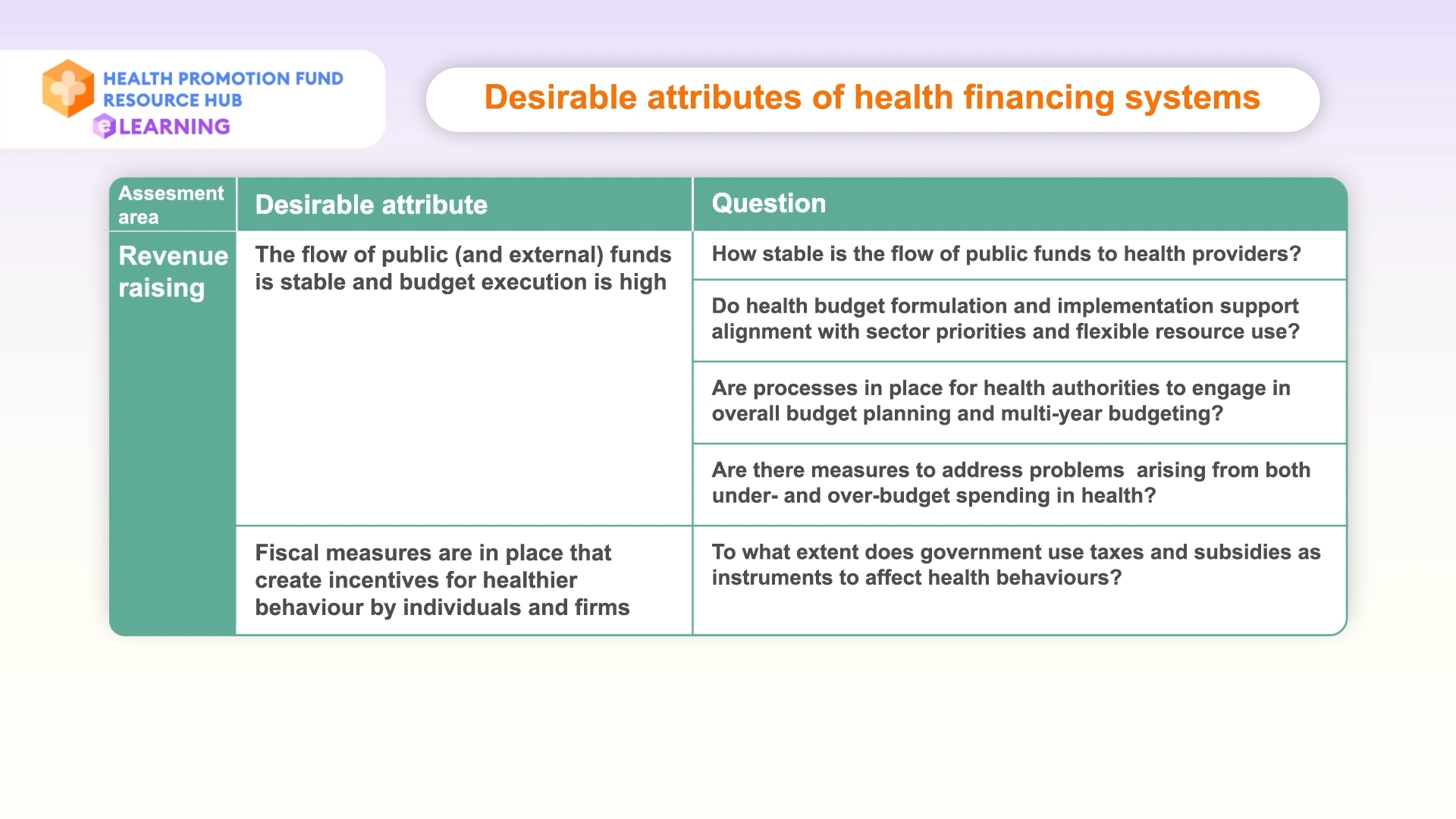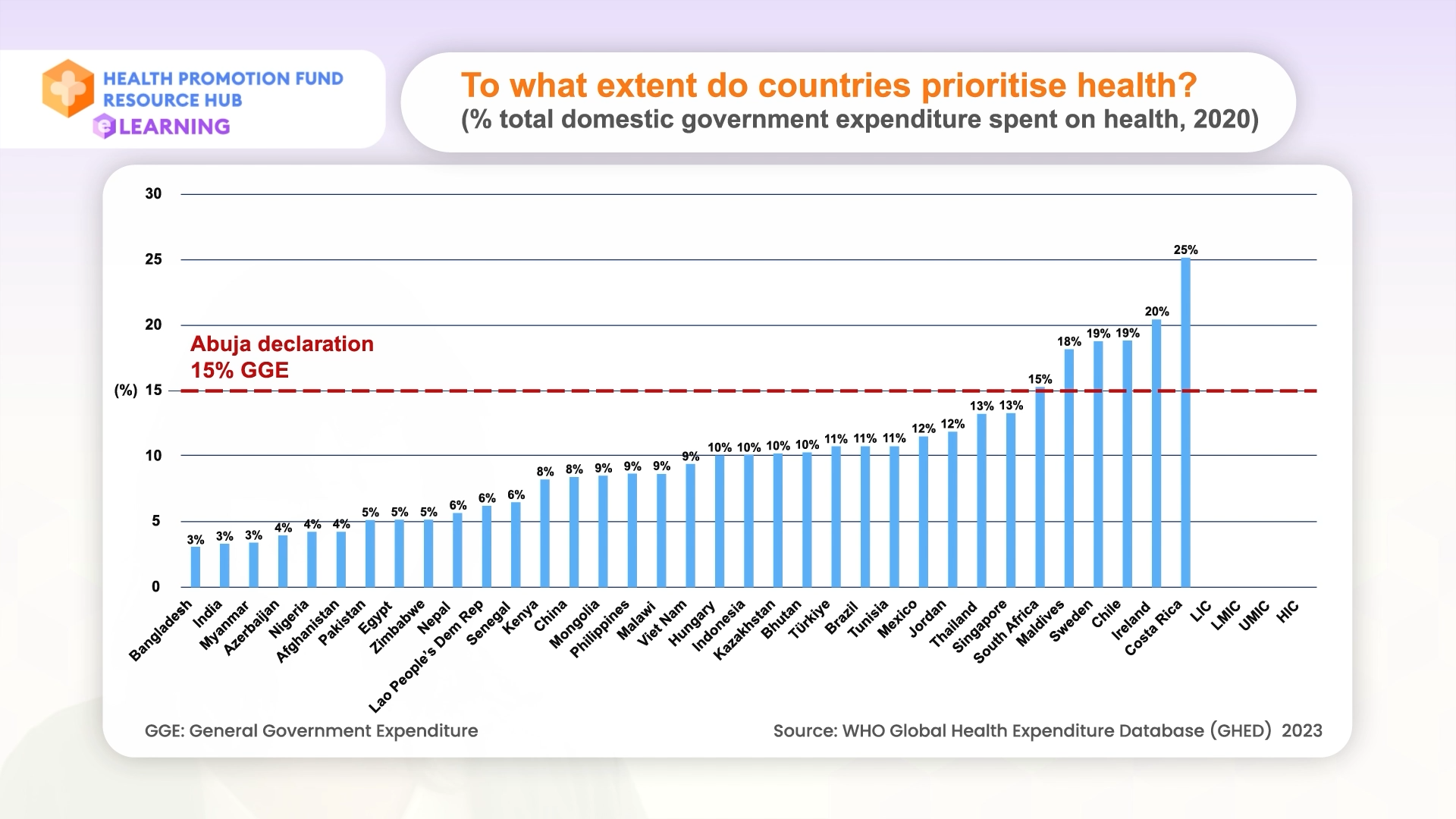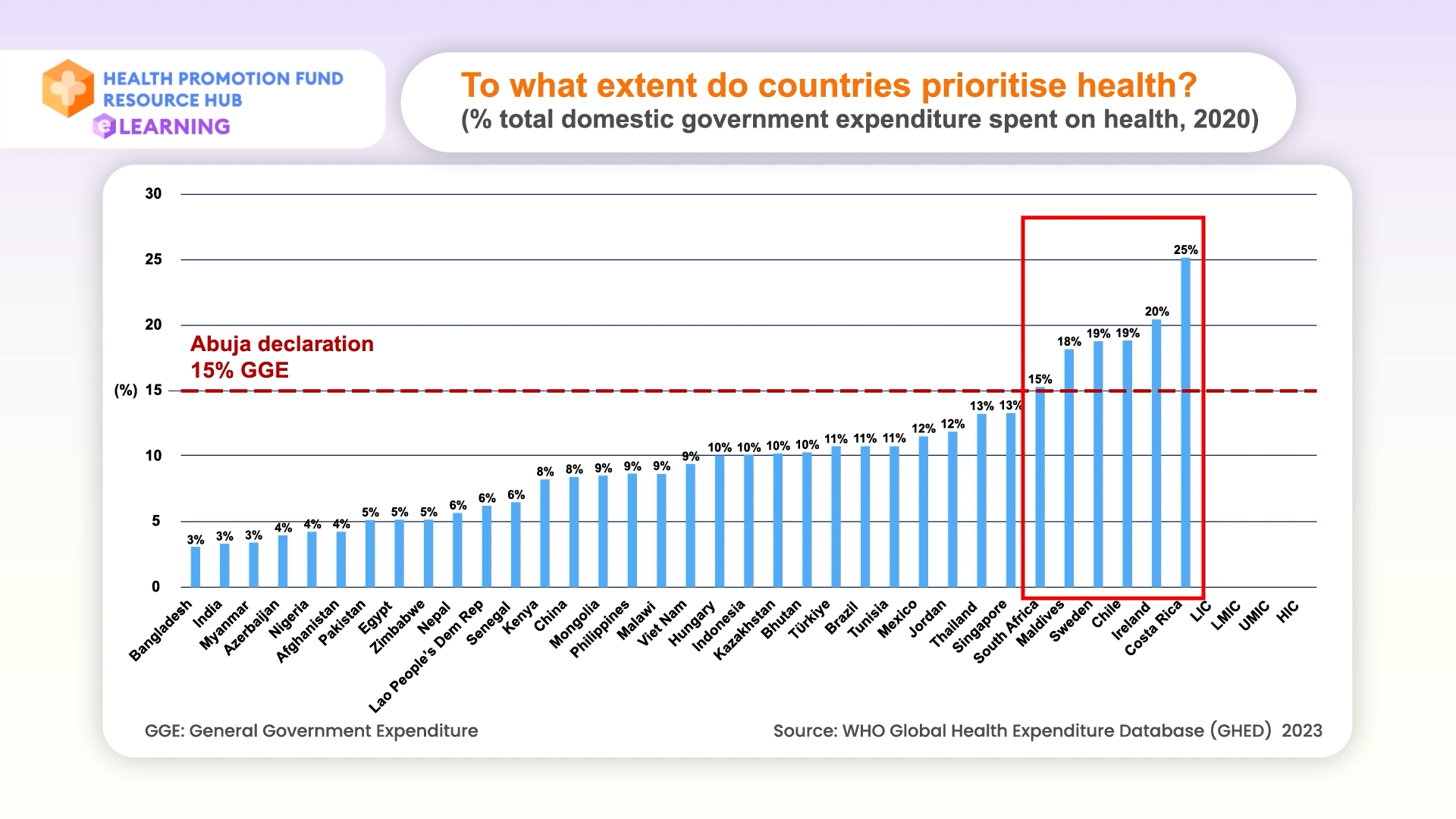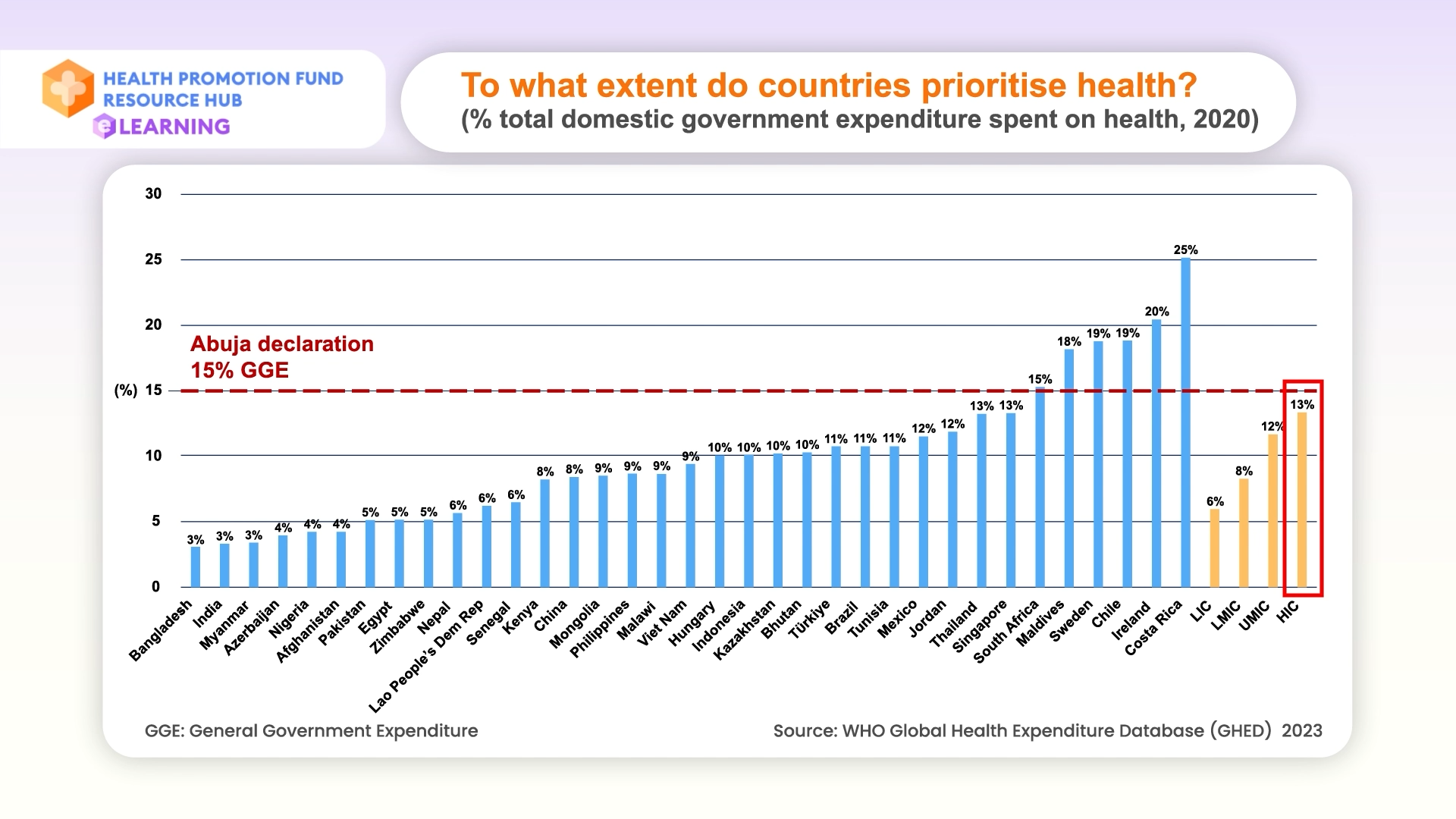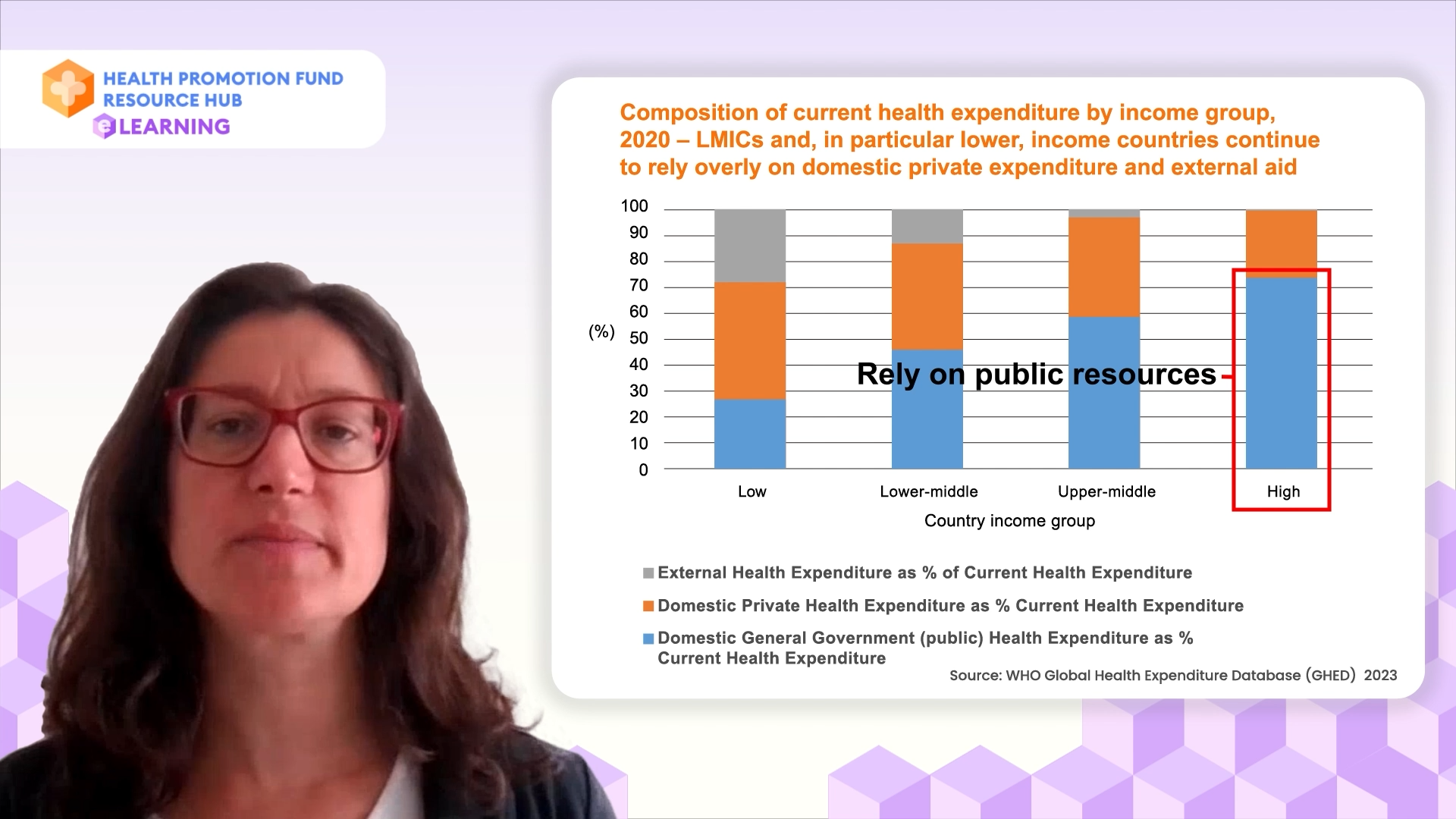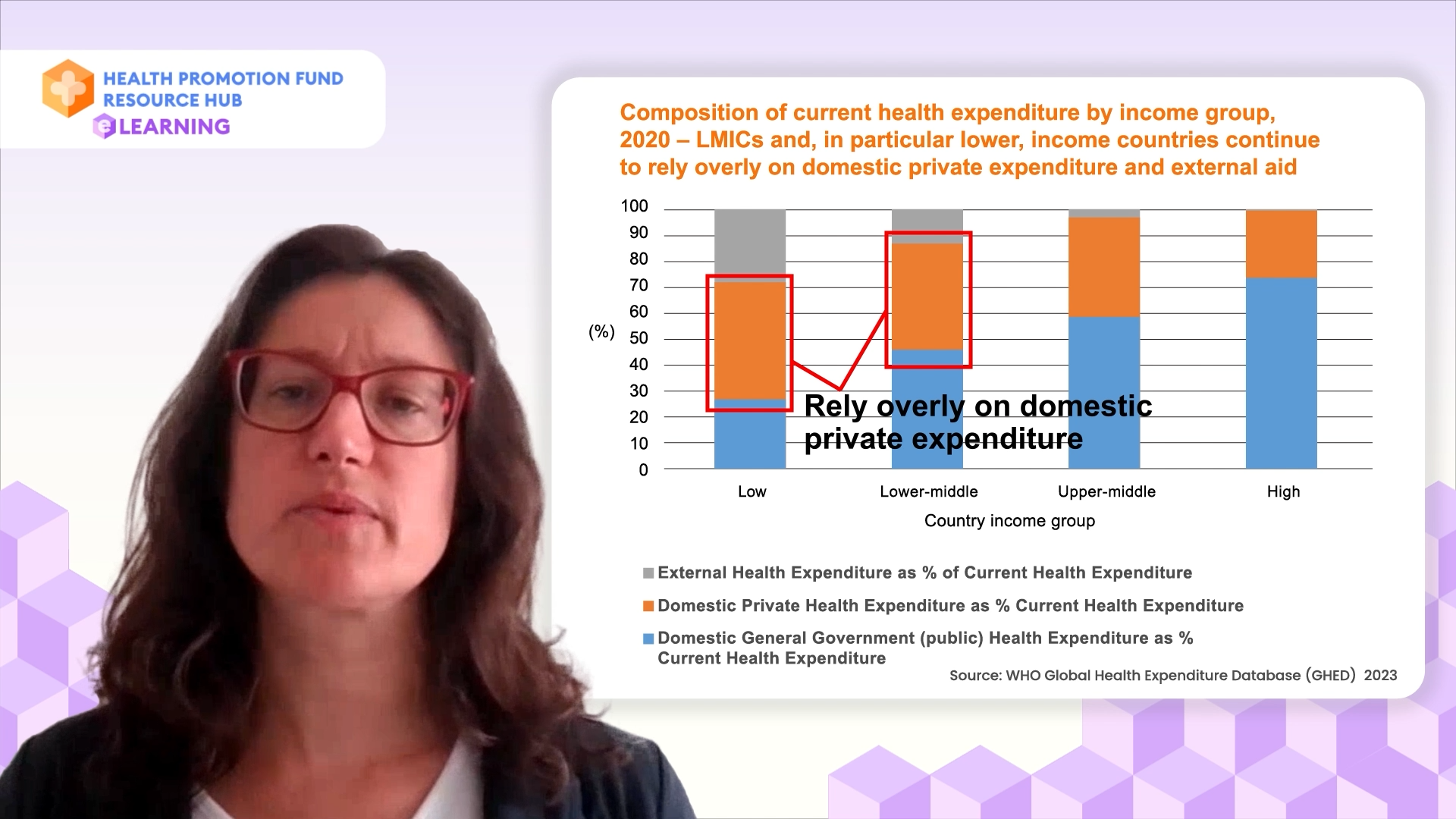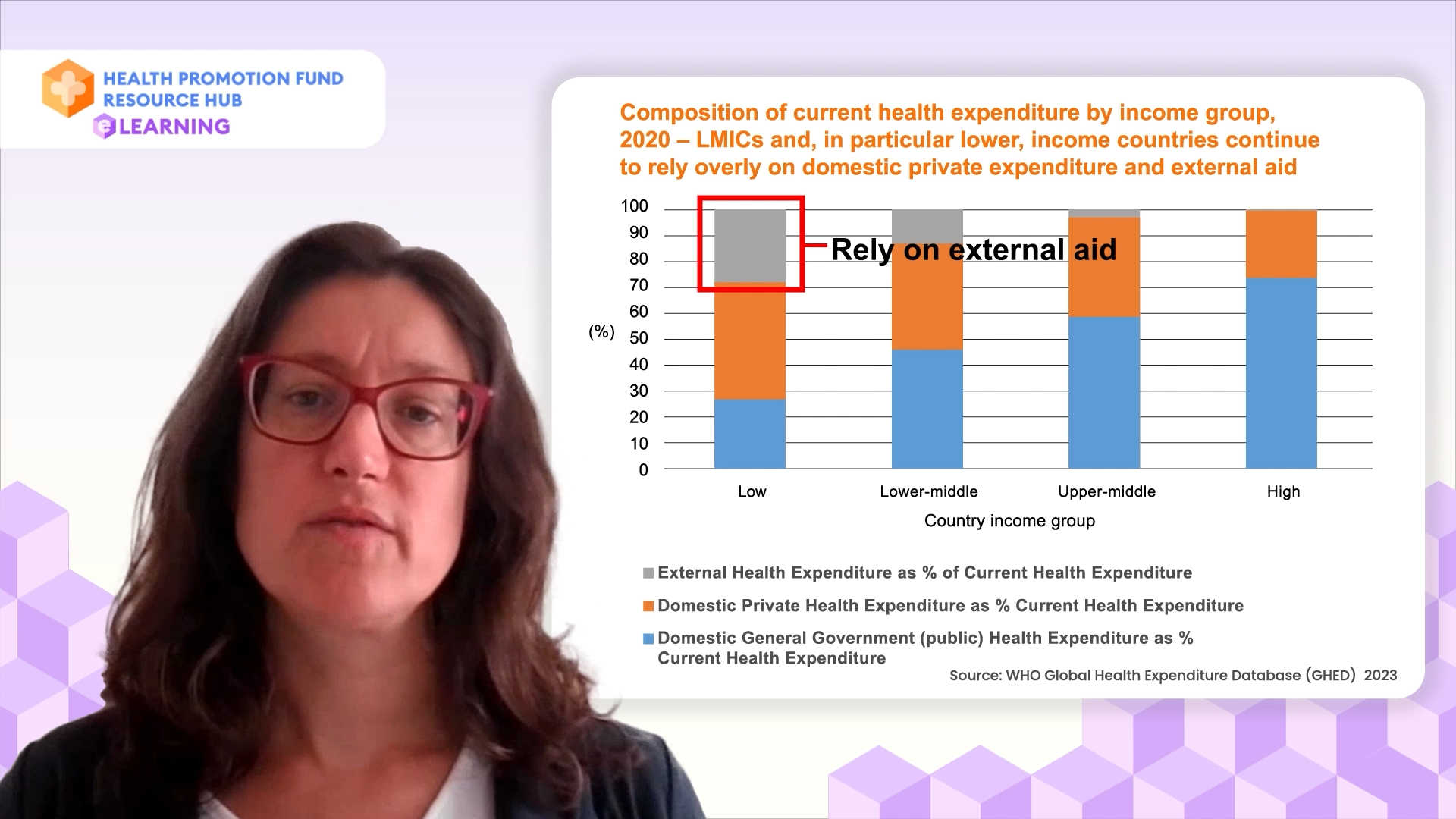Let’s look at the main sources of money usually used for health at country level. Those can be classified into two broad sources, public sources and private sources. Public sources are from the government and are considered compulsory. They are essentially domestic and external. Domestic sources come from direct taxes paid by households and companies on income, earnings, or profits, and paid directly to government, for example: income tax, payroll tax, and corporate income or profits taxes. There are also indirect taxes which are paid on what people spend and are paid indirectly to government through for example retailer shops. Examples are value-added tax (VAT) or sales tax, and excise taxes on the consumption of products such as alcohol and tobacco. So that is our focus, health taxes or import duties. Non-tax revenues are for example from state-owned companies which include “natural resource revenues” like oil and gas. External sources are usually grants from other governments or international development agencies. This money usually flows through the government as well. As opposed to domestic sources, there are private sources. And those are generally considered voluntary since they are not required by governments but are expenses decided by individuals. Those can be out-of-pocket expenditures that patients make themselves upon delivery of health service or voluntary prepayments like for example corporate-funded health services or individual contributions to commercial or community-based health insurance schemes. What are the desirable attributes of a health financing system?
WHO (World Health Organization) has developed a standardised qualitative approach to assessing country health financing systems, it is called the “Health Financing Progress Matrix”. This matrix assesses a country’s health financing institutions, processes, policies and their implementation, benchmarked against good practice in the context of universal health coverage.n.
In terms of revenue raising for health, the table here summarises the list of desirable attributes and the question to ask to be able to make the assessment of good attributes being followed. Those attributes are defined based on the following: Health expenditure is based predominantly on public/compulsory funding sources and as little as possible on external or private sources. The level of public (and external) funding is predictable over a period of years. This helps effective planning of multiple years.
The flow of public (and external) funds is stable and budget execution is high, to make sure that money is spent well and where it should be. And finally, fiscal measures are in place that create incentives for healthier behaviour by individuals and firms. This is where health taxes for example usually fall.
We just talked about how health is funded at a country level and what are the sources used for it. But how much is actually spent on health and to what extent do countries prioritise health? The graph here shows domestic general government health expenditures as a percentage of general government expenditure. It indicates the priority governments give to spending on health from their own domestic public resources. It expresses this priority by comparing the size of current public health expenditures relative to the total size of government expenditure. Countries covered here are indicative and are supposed to be coming from different regions and different levels of income. The proportion is compared against the 15% benchmark. This benchmark is based on the so-called Abuja Declaration.
In April 2001, heads of state of African Union countries met and pledged to set a target of allocating at least 15% of their annual budget to improve the health sector. This benchmark is now used as a reference beyond Africa.
As we can see, unfortunately, few countries have reached this benchmark and it is not the case either when looking at averages by income groups, even high-income countries. Clearly, there is a need to increase prioritisation of the health sector for all countries.
In addition to the importance of health expenditure in general government expenditure, when looking closely at the composition of current health expenditure by income group, we see that high-income countries’ reliance is mainly on public resources.
This reliance reduces as the level of income goes down. And in particular, unfortunately, low and lower-middle-income countries rely overly on domestic private expenditure, and low-income countries also on external aid.
For the next section, we will look at “Revenue raising using tax measures that generate sustainable financing for health promotion”. I will see you in the next section.


